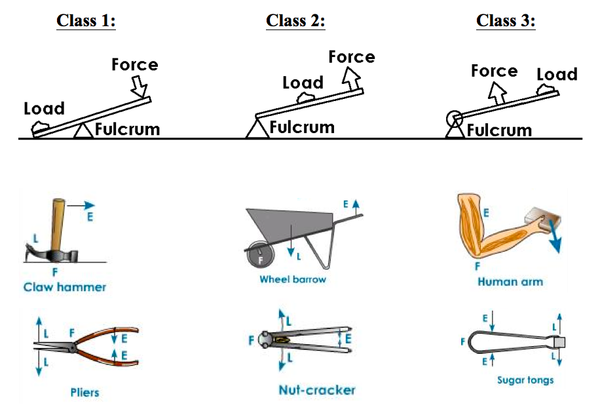Each force produces a specific torque, which is the force multiplied by its distance from the fulcrum.
Torque = Force x Distance
When the forces acting on opposite ends of a lever are equak, we say the lever is equilibrium. We can express this mathematically as the Law of the Lever.
F x d = R x r
F is the force or the effor that we use; d is its distance from the fulcrum; R is the resistance or load that we want to move; and r is its distance from the fulcrum.
- Classes of levers.
Each class of lever has different uses:
- Class 2 levers increase the force that we apply.
- Class 3 levers increase the distance that the end of the lever moves.
- Class 1 levers can do both of those things.

- A hand crank.
F x d = R x r
F is the force that we apply; d is its distance from the axis of rotation.
R is the resistance in the shaft; and r is the radius of the shaft itself.
No hay comentarios:
Publicar un comentario